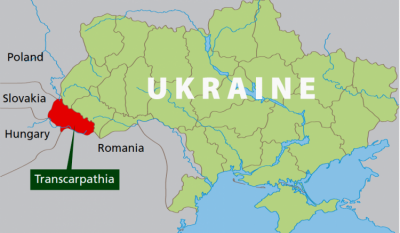Hungary-Ukraine Relations: Transcarpathia and the “Western Front”

Foreign Minister Peter Szijjarto was speaking at an OSCE meeting in Vienna last week when he requested that the organization send a special monitoring mission to Ukraine’s western region of Transcarpathia, arguing that anti-Hungarian demonstrations there have made it necessary for the international community to keep an eye on the situation. He also made it clear that Budapest interprets Kiev’s new language law as being discriminatory against the Hungarian minority in the area. His government probably won’t be successful in getting Ukraine to overturn its ultra-nationalist legislation, nor in lobbying the OSCE to preemptively dispatch a special monitoring mission to Transcarpathia before the situation worsens, but his comments importantly drew attention to these two interconnected issues and confirmed that Hungary won’t be supporting Ukraine’s pro-Western institutional aspirations anytime soon until these problems are settled.
In fact, Szijjarto’s statement suggests that the international situation between the two neighboring states might even deteriorate further. Observers should keep in mind that Hungary has a policy of supporting ethnic Hungarians in what could be referred to as the country’s own “near abroad” via the dispensation of passports and socio-economic developmental assistance. Budapest’s view is that over 3 million of its compatriots were unfairly left outside of their homeland following the 1920 Treaty of Trianon that formally dismantled the Lands of the Crown of Saint Stephen, as Hungary was officially referred to when it was joined with Austria in the Dual Monarchy. It was only in recent years under Prime Minister Viktor Orban’s government that the state became confident enough with its soft power and economic sway to make serious efforts at informally reintegrating these people into the broader context of Hungarian society.
As it relates to Ukraine, approximately 12% of Transcarpathia’s population is ethnic Hungarian, with these roughly 150,000 people living very close to the border with their eponymous state and having been part of its civilization for over a millennium. Apart from the emotional-historic significance that that their welfare holds for Budapest, Hungary’s increasing concern about their rights and safety symbolizes the emergence of a so-called “Western Front” to complement the “Eastern” one that Russia has opened up on the other side of the country in reuniting with Crimea and extending political-moral support to the Donbass rebels. From Kiev’s perspective, its peripheral populations pose troubles for national unity, though this is entirely a problem of its leaders’ own ultra-nationalist making in threatening them, taking away their existing rights, and forcing them to partake in “Ukrainization”.
It’s easy for the West to spin Russia’s support of its own compatriots as a new form of “imperialism”, but it’s comparatively harder for them to do so when it comes to fellow EU- and NATO-member Hungary, which is why the US has allied with Soros against Orban in trying to smear him as an “illiberal dictator”. The US fears that Budapest’s humanitarian interests in Transcarpathia could “destabilize” fragile Ukraine, ignoring the very fact that it’s because of Kiev itself that there are even problems in this corner of the country, and they know if they don’t stop Hungary soon enough, then it’s only a matter of time before Orban’s “Three Seas” partners in Romania and Poland feel comfortable enough to follow suit in raising the issue of their own respective minorities’ rights & security and turn the so-called “Western Front” into a force to be reckoned with.

Map of the Ukrainian Transcarpathia (Source: Oriental Review)
The post presented is the partial transcript of the CONTEXT COUNTDOWN:
Andrew Korybko is an American Moscow-based political analyst specializing in the relationship between the US strategy in Afro-Eurasia, China’s One Belt One Road global vision of New Silk Road connectivity, and Hybrid Warfare.
Featured image is from Hungary Today.

